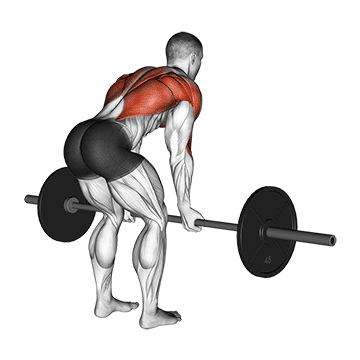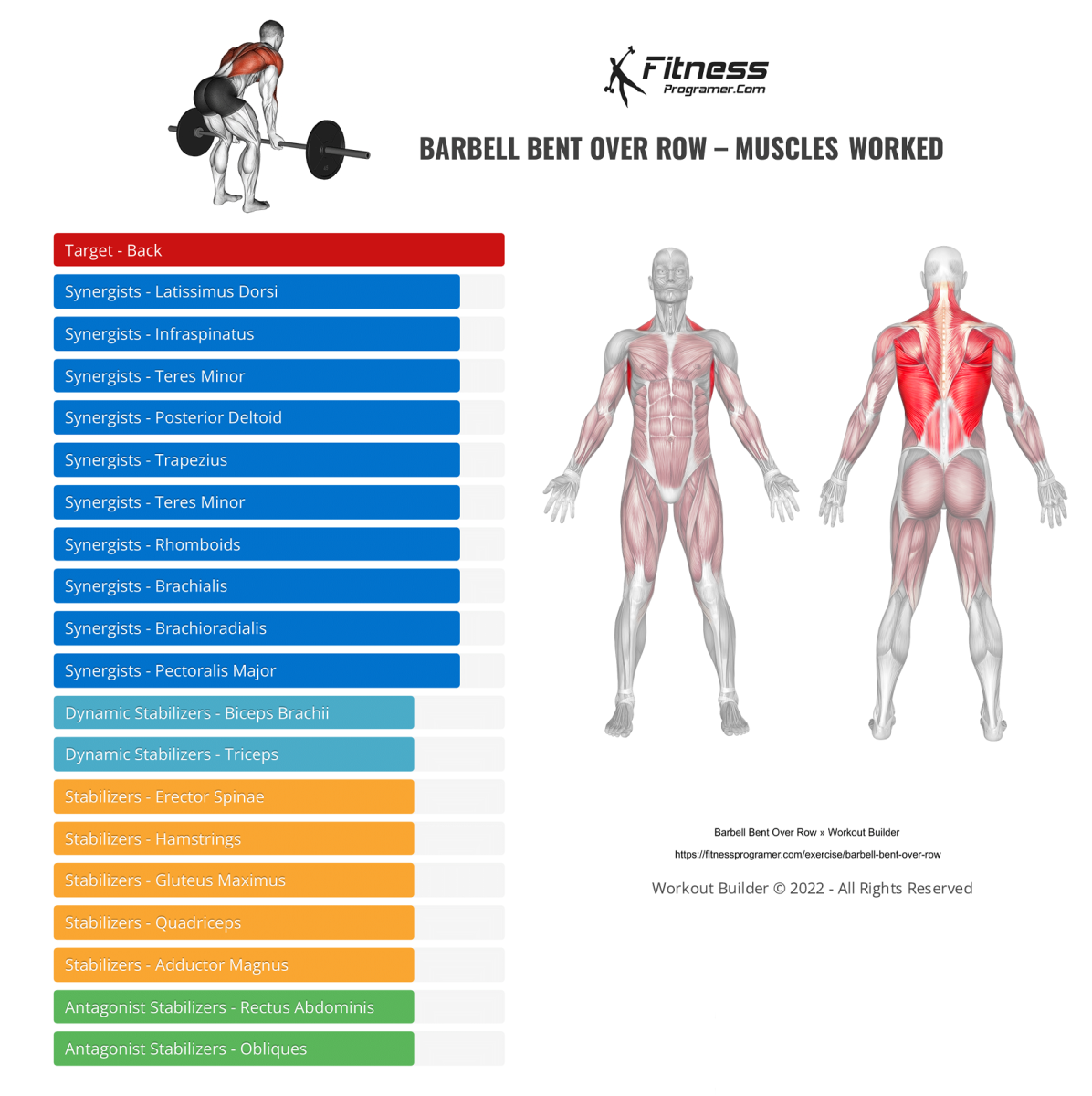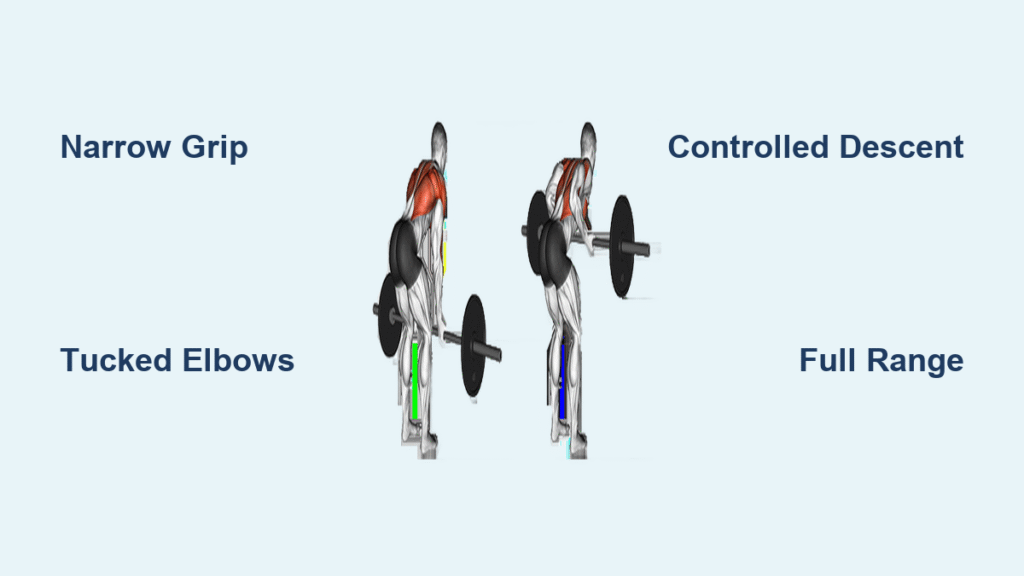The underhand barbell row is your secret weapon for building a wider, thicker back while simultaneously developing impressive biceps—all in one powerful movement. Unlike traditional overhand rows that emphasize upper back thickness, this supinated grip variation uniquely targets the lower lats for that coveted V-taper while significantly boosting biceps activation. If you’ve been struggling to feel your lats working during back day or want to maximize your pulling strength without sacrificing arm development, mastering the underhand barbell row technique will transform your results.
Most lifters miss the mark by treating this as just another rowing motion, failing to leverage its distinct biomechanical advantages. The subtle differences in grip mechanics, elbow positioning, and bar path create specific muscle activation patterns that separate effective training from wasted effort. By the end of this guide, you’ll know exactly how to perform underhand barbell rows with perfect form for maximum muscle growth and minimal joint stress.
Set Up Your Underhand Grip for Maximum Lat Activation

Narrow Your Hands for Lower Lat Focus
Position your hands just inside shoulder width on the bar with palms facing up. This narrower grip naturally tucks your elbows closer to your sides, creating the optimal biomechanical angle for lower lat fiber recruitment. Too wide and you’ll shift tension toward your rear delts; too narrow and you’ll compromise your range of motion. Warning: If your grip becomes too narrow, you risk wrist strain and reduced mechanical advantage.
Lock in Your 45-60 Degree Torso Angle
Hinge at your hips while maintaining a neutral spine, aiming for that critical 45-60 degree torso angle from vertical. This precise positioning keeps constant tension on your lats while protecting your lower back from excessive shear forces. Your knees should have a slight bend to create a stable base—think of setting up like you’re about to perform a deadlift, but with a more upright posture. Check your form by imagining a straight line from your hips to your shoulders; if you’re parallel to the floor, you’re risking lower back strain.
Perfect Your Bar Path to Target Lats
Pull the bar toward your lower abdomen or upper hip region—not your chest. This trajectory aligns perfectly with your lat fibers’ natural pulling angle. Visualize driving your elbows toward your back pockets rather than simply moving the bar upward. This mental cue transforms the movement from a generic pull to a targeted lat builder. At the top position, you should feel your shoulder blades retracting and depressing toward your spine.
Boost Biceps and Lower Lats Simultaneously

Leverage 40-50% More Biceps Activation
The supinated grip increases biceps activation by 40-50% compared to overhand variations, making this the ideal movement for lifters who want to maximize both back and arm development. Your biceps naturally assist in elbow flexion, creating that satisfying “muscle sandwich” effect where you feel both your lats and biceps working hard. However, this increased biceps involvement means you’ll likely handle 10-15% more weight than traditional overhand rows—don’t let this fool you into sacrificing form for heavier loads.
Feel Your Lower Lats Working Harder
The underhand grip’s elbow positioning creates a more linear pulling path toward your hips, specifically targeting the lower and mid-portions of your lats—the key muscles for creating that dramatic V-taper physique. The close elbow position naturally biases these lower fibers, making this variation superior for lat width development compared to standard rows. Pro tip: Focus on stretching your lats fully at the bottom position to maximize the stretch-mediated hypertrophy potential.
Understand Secondary Muscle Contributions
While your lats and biceps take center stage, your middle back muscles—rhomboids and middle trapezius—work as crucial stabilizers throughout the movement. The brachialis, located underneath your biceps, receives significant secondary stimulation as an elbow flexor. This comprehensive muscle recruitment makes the underhand row an exceptionally efficient compound movement for overall upper body development.
Execute Flawless Reps with These Technique Hacks
Drive With Your Elbows, Not Your Arms
Initiate each repetition by driving your elbows back and down toward your hip pockets—not by bending your arms. Think of your hands merely as hooks connecting you to the bar. This elbow-first approach ensures lat engagement before biceps take over, which is critical for building back width rather than just arm size. If you feel your biceps fatiguing before your lats, you’re likely initiating the movement with your arms instead of your back.
Squeeze at the Top for Complete Contraction
At peak contraction, focus on retracting and depressing your shoulder blades together. Hold this squeeze for 1-2 seconds to maximize time-under-tension and improve mind-muscle connection. Avoid simply pulling your arms back—instead, visualize bringing your shoulder blades toward your spine while keeping your chest up. This subtle difference transforms mediocre reps into muscle-building power moves.
Control the Descent for Maximum Growth
Lower the weight under control for 2-3 seconds, resisting gravity throughout the eccentric phase. The increased range of motion with underhand grip allows for a deeper stretch at the bottom position, which research shows enhances hypertrophy potential. Never let the weight drop—this controlled negative is where significant muscle damage and growth stimulation occur.
Fix These Underhand Row Form Mistakes Immediately

Stop Swinging Your Torso for Momentum
Using excessive body English reduces lat engagement and dramatically increases injury risk. Keep your core braced and torso angle consistent throughout each rep—your lower back should remain stable, not moving with the weight. If you need momentum to move the weight, reduce the load immediately and focus on strict form. Warning: This cheating technique often leads to lower back strain or disc issues over time.
Keep Your Elbows Tucked Close to Your Sides
Allowing elbows to drift away from your body shifts emphasis away from lats toward rear delts and traps. Maintain that tucked elbow position—the hallmark of effective underhand rowing. Your elbows should travel in a straight line toward your hips, not flaring outward. If you can’t feel your lats working, check your elbow position first.
Complete Full Range of Motion Reps
Stopping short at either the top or bottom position severely limits muscle fiber recruitment. Ensure full extension at the bottom for maximum stretch and complete contraction at the top for peak lat activation. Many lifters cut the range short to lift heavier weight, but this sacrifices the very benefits that make underhand rows so valuable.
Program Underhand Rows for Optimal Results
Select the Right Weight for Your Goals
Start with 10-15% more weight than your overhand row due to biceps assistance, but don’t get greedy. For strength, aim for 4-6 reps at 80-85% of your one-rep max. For hypertrophy, use 8-12 reps at 65-75% of your max. If building mind-muscle connection is your priority, go lighter with 12-15+ reps at 60% or less of your max. Pro tip: The weight should feel challenging but controllable throughout the full range of motion.
Determine Your Weekly Volume
Beginners should perform 3-4 sets, 1-2 times per week. Intermediate lifters benefit from 4-5 sets, 2-3 times weekly. Advanced trainees can handle up to 6-8 total weekly sets when properly periodized. Track your progress monthly—you should see 5-10% strength increases as you adapt. If your lower back fatigues before your lats, reduce volume and focus on form quality over quantity.
Rotate Variations for Balanced Development
Don’t make underhand rows your only rowing movement. Rotate between underhand and overhand variations to ensure balanced development—use underhand for lat width and biceps, overhand for upper back thickness. When technique breaks down from fatigue, switch to chest-supported rows to maintain strict form. Consider single-arm dumbbell versions to address any strength imbalances between sides.
Protect Your Joints While Maximizing Gains
Address Elbow and Wrist Discomfort Immediately
The supinated position increases elbow joint stress, particularly under heavy loads. If you experience discomfort, switch to EZ bar variations to reduce wrist strain while maintaining lat focus. Monitor biceps tendon health closely—progressive overload is crucial to prevent tears. If you feel sharp pain or popping sensations in your biceps tendon, stop immediately and consult a professional.
Maintain Lower Back Safety
If lower back fatigue becomes limiting before your lats feel worked, consider chest-supported variations or reduce the weight to maintain strict form. Your torso angle should never drop below 45 degrees from vertical—this dramatically increases shear forces on your lumbar spine. Warning: If you experience lower back pain beyond normal muscle fatigue, discontinue the exercise and reassess your form.
Master the underhand barbell row by focusing on these technical elements rather than simply moving heavy weight. Quality reps with full range of motion always trump sloppy heavy lifting when it comes to building an impressive physique. Implement these techniques consistently, and you’ll transform this movement into your most effective back-building weapon.




